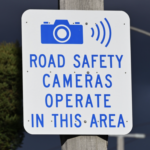Does Tailgating Amount to a Traffic Offence?

Being stuck behind an unreasonably slow driver can be frustrating, especially if you are blocked in by traffic or travelling on a one-lane road.
But it’s important to know that ‘tailgating’ – the act of driving too closely to the vehicle in front of you – can amount to a traffic offence in New South Wales and indeed across Australia.
The offence of tailgating
In that regard, regulation 126 of the Road Rules provides as follows:
‘126 Keeping a safe distance behind vehicles
A driver must drive a sufficient distance behind a vehicle travelling in front of the driver so the driver can, if necessary, stop safely to avoid a collision with the vehicle.’
The offence carries a fine of $448 at the time of writing plus three demerit points, or a maximum fine of 20 penalty units if the matter is brought before a court; for example, if you elect to have the matter dealt with in court and plead guilty or are found guilty.
What is ‘safe distance?’
There is no hard and fast rule or formula for determining whether the distance between vehicles is ‘safe’, and it can depend on many factors – including the conditions of the road at the time, the speed, limit, type of vehicle and so on; it is a matter of fact which is decided on a case-by-case basis.
However, the rule of thumb is you must be able to stop a safe distance behind the vehicle ahead and thereby avoid a collision if there is a sudden, unexpected event – for example, if the vehicle ahead were to suddenly stop to avoid an obstacle, such as an animal or person.
Tailgating can cause collisions
The reason behind the rule is, of course, to reduce the likelihood of a crash.
In that regard, figures published by the NRMA suggest that rear end collisions are the most common type of collisions on our roads, with more than 15,000 incidents reported from 2017 to 2021.
The ‘three-second rule’
Generally, learner drivers are taught to follow the ‘three-second rule’ – which means that you should travel three seconds behind the vehicle in front, at all times – irrespective of whether you’re travelling on a busy, jammed freeway, or an isolated country road.
Three seconds is the recommended time required and it is intended so that the driver is able to quickly assess the situation if the driver in front does something unpredictable and decide on the best course of action, whether that may be to brake to a stop or swerve safely to avoid hitting the vehicle in front.
An easy way to gauge this is to choose a marker on the side of the road and count ‘1–and–2–and–3’ between the time the vehicle in front of you passes and you do.
But if that’s not possible, use common sense and keep a safe distance. Remember too, that if you rear-end the vehicle in front of you, you are most likely to be found to be ‘at fault’ and the insurance liability will be yours.
It’s often easy to forget this rule when the traffic is banked up and appears to be going nowhere, but it’s critical that you consider the three-second rule and avoid tailgating especially at these times.
When traffic is jammed, there is a greater risk of multi-car collision, particularly if there are not safe spaces between vehicles. If a car behind you fails to stop, and there is no adequate gap between you and the car in front.
So, when cars are too close together, they can crash like dominoes.
And you should never think that when speed is not a factor, the damage will only be minimal – neck and spine injuries can be caused by these kinds of surprise jolts.
It’s always important to stop and check on how people are feeling post-accident, and call an ambulance if required. Failing to stop and render assistance if required is an offence.
Another reason why tailgating is illegal is because it can be intimidating to the driver in front – it can have the effect of making a driver nervous – they can even be forced to speed up if they think they are being tailgated – and this can lead to an accident, by causing mistakes in their own driving.
How to deal with tailgating
Firstly, don’t feel pressured to increase your speed – it can lead to you breaking the speed limit or driving in conditions where you don’t feel confident. Instead, when an opportunity arises to let the person behind you pass, let them do so.
If you have concerns about the driving behaviour of anyone on the road, you can report them to police by calling triple 0.







